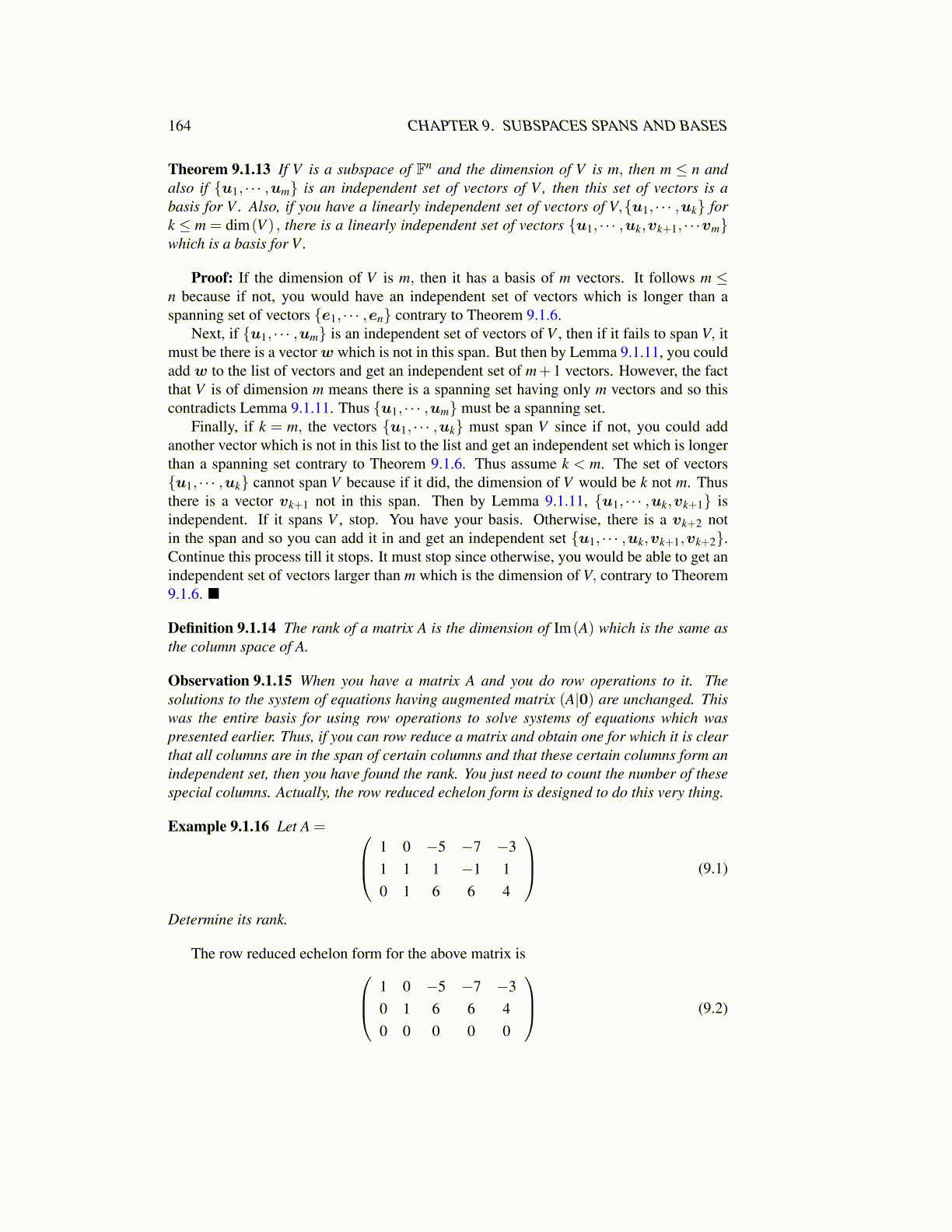
164 CHAPTER 9. SUBSPACES SPANS AND BASES
Theorem 9.1.13 If V is a subspace of Fn and the dimension of V is m, then m ≤ n andalso if {u1, · · · ,um} is an independent set of vectors of V , then this set of vectors is abasis for V . Also, if you have a linearly independent set of vectors of V,{u1, · · · ,uk} fork ≤ m = dim(V ) , there is a linearly independent set of vectors {u1, · · · ,uk,vk+1, · · ·vm}which is a basis for V .
Proof: If the dimension of V is m, then it has a basis of m vectors. It follows m ≤n because if not, you would have an independent set of vectors which is longer than aspanning set of vectors {e1, · · · ,en} contrary to Theorem 9.1.6.
Next, if {u1, · · · ,um} is an independent set of vectors of V , then if it fails to span V, itmust be there is a vector w which is not in this span. But then by Lemma 9.1.11, you couldadd w to the list of vectors and get an independent set of m+1 vectors. However, the factthat V is of dimension m means there is a spanning set having only m vectors and so thiscontradicts Lemma 9.1.11. Thus {u1, · · · ,um} must be a spanning set.
Finally, if k = m, the vectors {u1, · · · ,uk} must span V since if not, you could addanother vector which is not in this list to the list and get an independent set which is longerthan a spanning set contrary to Theorem 9.1.6. Thus assume k < m. The set of vectors{u1, · · · ,uk} cannot span V because if it did, the dimension of V would be k not m. Thusthere is a vector vk+1 not in this span. Then by Lemma 9.1.11, {u1, · · · ,uk,vk+1} isindependent. If it spans V , stop. You have your basis. Otherwise, there is a vk+2 notin the span and so you can add it in and get an independent set {u1, · · · ,uk,vk+1,vk+2}.Continue this process till it stops. It must stop since otherwise, you would be able to get anindependent set of vectors larger than m which is the dimension of V, contrary to Theorem9.1.6. ■
Definition 9.1.14 The rank of a matrix A is the dimension of Im(A) which is the same asthe column space of A.
Observation 9.1.15 When you have a matrix A and you do row operations to it. Thesolutions to the system of equations having augmented matrix (A|0) are unchanged. Thiswas the entire basis for using row operations to solve systems of equations which waspresented earlier. Thus, if you can row reduce a matrix and obtain one for which it is clearthat all columns are in the span of certain columns and that these certain columns form anindependent set, then you have found the rank. You just need to count the number of thesespecial columns. Actually, the row reduced echelon form is designed to do this very thing.
Example 9.1.16 Let A = 1 0 −5 −7 −31 1 1 −1 10 1 6 6 4
(9.1)
Determine its rank.
The row reduced echelon form for the above matrix is 1 0 −5 −7 −30 1 6 6 40 0 0 0 0
(9.2)